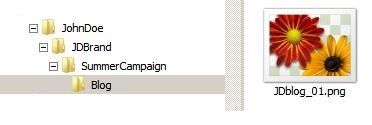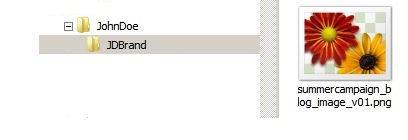A Graphic Designer’s Guide
to Better File Naming
![]() By Haidan Dong
By Haidan Dong
Ever had trouble looking for the right file? You tried to run a search but couldn’t because the file name was irrelevant to the project. Or you opened your file logofinalfinalupdated.ai when the correct file was actually logofinalfinaledited2.ai. Needless to say, having an organized file naming structure is important for graphic designers.
Why should I have a file naming structure?
Having a file naming structure helps you in a number of different ways.
- It helps you stay organized, so that you can save time
- It reduces the chances of mistakes
- It makes communicating with clients easier
- It makes working with team members easier
- It makes files and folders easier to search for
- It improves SEO
- It improves the readability of the file names
- It elevates your professionalism as a graphic designer
How should I name my design files?
There are many different file naming conventions and there isn’t a “right” way, but you need to include the elements that are important to your own workflow. The following list contains some elements that many graphic designers find helpful in file names. Pick the ones that you think would help you identify the file more easily:
- Client name, initials or last name (e.g. JohnDoe)
- Client’s brand (e.g. JDBrand)
- Name of client’s campaign (e.g. SummerCampaign)
- Channel within that campaign (e.g. blog)
- Component needed for channel (e.g. image)
- Date (e.g. 2019_05_30)
- Version number (e.g. v01)
You will very likely not need all the elements. For example, maybe you only work on one project per client, and you specialize in business cards. In this case, you probably won’t need the name of your client’s campaign. Or maybe you tend to finish a project in one day, so you need the version number more than the date. Choose the elements that meet your unique work needs.
Now string these elements together to create your file name. If it looks too long, check out the next section below.
How long should my file name be?
If your file name is too long, it tends to get truncated when displayed. This truncation varies between operating systems and devices, so there isn’t a set number of characters. Your goal then is be as concise as possible.
With shorter names, you will be able to see the full file name easily. They are easier to type when you’re communicating with clients or team members, and faster to scan when you’re in a hurry. With shorter names, however, you will likely need more project folders and folder levels to provide the additional information not included in the file name.


Longer names, on the other hand, already have plenty of identifying information in them, so they don’t require a very complex folder structure. They also make it easier for you to run a search because they likely include details about your project. Unfortunately they tend to get truncated so that you can’t see the full information. Long names also slightly increase the file size.


Examples of File Naming
Here are some examples of file names so that you can see different file naming structures. You will notice that some contain more information than others. Again, it should be need-based.
- Doe_Blog_image_2019-05-30_V01
- blog_banner_2019-05-30-v01
- doe_blog_banner01
- jdoe_blog_20190530_v01
- JD_blogbanner_v01
- jd_blog001_v1
- jd_banner_01
Tip: If you have a large volume of projects to archive, use a project number instead of a project name. Just make sure you have a record of which numbers correspond with which projects.
File Naming Do’s and Don’ts
Do’s
- Do name files with SEO in mind if it’s going on the web (use keywords)
- Do use 0’s in front of single digits to preserve chronological order (e.g. 01 instead of 1)
- Do save changes as new files
- Do stay consistent with your naming structure
- Do use international standard date notation (e.g. 2019-05-30)
Don’ts
- Don’t use spaces or special characters except underscores and dashes
- Don’t name files that only differ between upper and lower case
- Don’t use words such as final, new, updated, fix, or edited
Conclusion
Naming your files in a structured manner can look like more work in the short run but in the long run it saves time, reduces mistakes, and elevates you professionally as a graphic designer. It makes working with a team easier and increases your productivity, so that you can focus on growing your design business instead of opening and closing the wrong files. For More Information on this Blog or any of our Marketing Products Call: 516-561-1468












